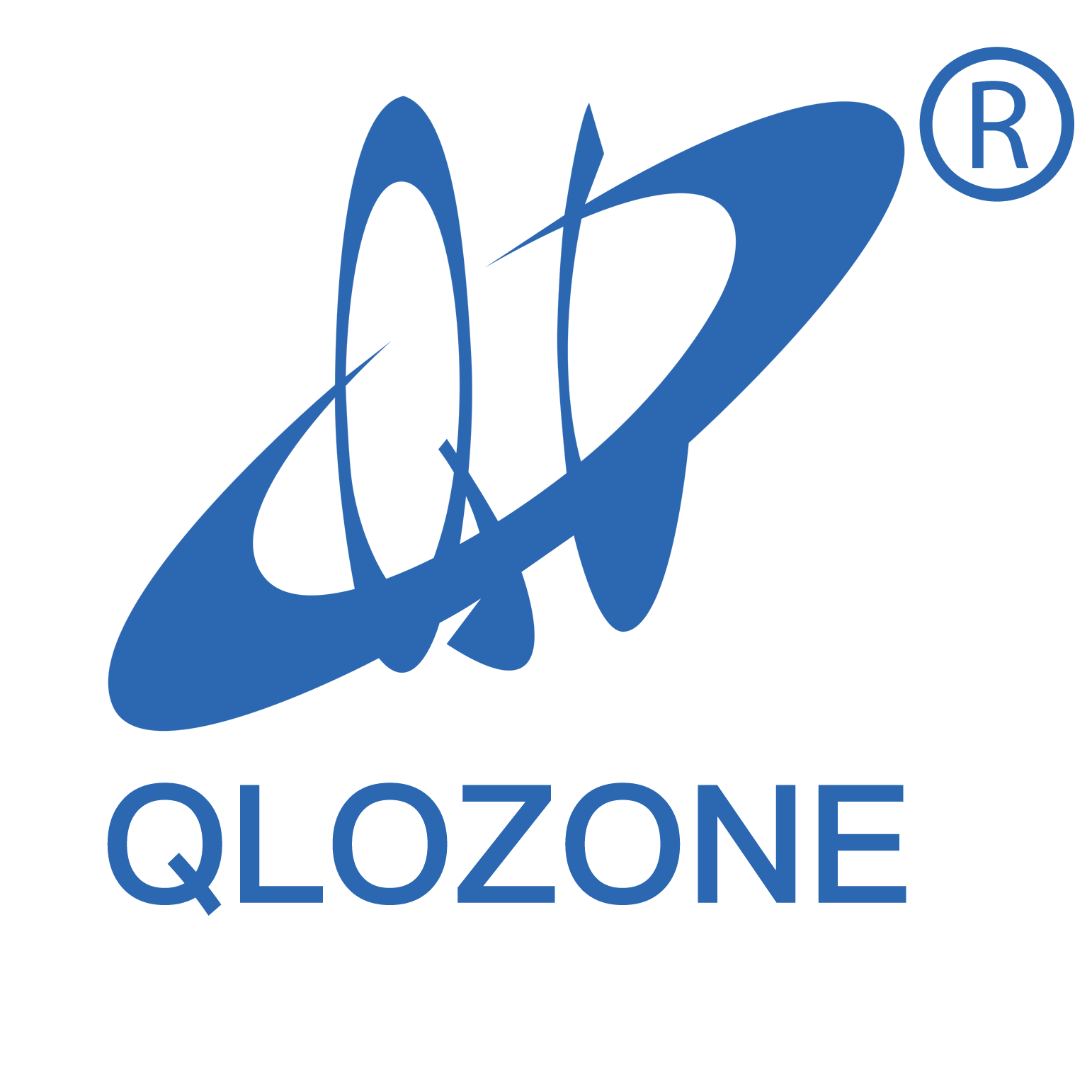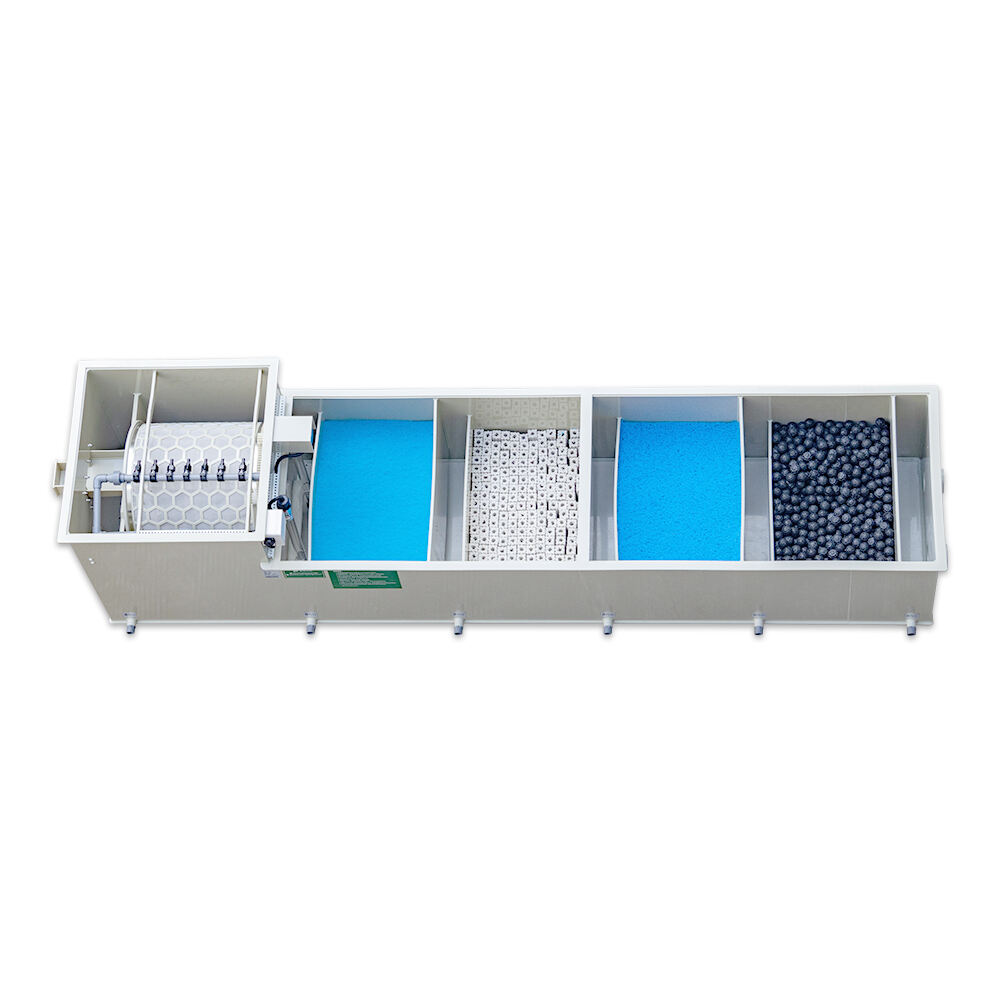Rolni tushunish Filtratsiya qilish koi hovuzini saqlashda
Toza koi hovuzi faqatgina jozibali suv ob'ekti emas, balki uning aholisining sog'lig'i va hayot sifatini saqlash uchun ehtiyotkorlik bilan muvozanatni talab qiladigan murakkab ekotizimdir. Ushbu ekotizimning asosida koi choy suv filtri , suvni oddiygina tozalashdan ancha yuqori maqsadga xizmat qiluvchi juda muhim komponent hisoblanadi. Ushbu ilg'or filtratsiya tizimlari koi baliqlarining rivojlanishi, o'simliklarning gullashi va butun hovuz tizimi mukammal muvozanatda saqlanishi uchun mehnatkashlik bilan ishlaydi.
Sog'lom karpli hovuzni saqlashda to'g'ri fil'trlashning ahamiyati katta. Samarali karpli hovuz fil'tri bo'lmasa, chiqindi tezda to'planib, suv sifatining yomonlashishiga, baliqlarning kasallikka chorayishiga va muhitning noaniqlikka sabab bo'ladi. Zamonaviy fil'trlash tizimlari suvning aniq saqlanishini ta'minlab, gullab-yashnayotgan hovuz ekotizimi uchun zarur bo'lgan biologik jarayonlarni qo'llab-quvvatlashda juda samarali rivojlanib ketdi.
Hovuz fil'trlash tizimlarining ilmiy asoslari
Mexanik fil'trlash jarayoni
Har qanday karpli hovuz fil'tr tizimida birinchi himoya chizig'i mexanik fil'trlashdir. Bu jarayonda jismonan axlat, barglar va boshqa qattiq chiqindilar suvdan olib tashlanadi. Ilg'or fil'tr tizimlari ko'p bosqichli mexanik fil'trlashdan foydalanadi, avval katta axlatlarni ushlab turadigan maydali fil'trlardan boshlab, keyin esa maydaroq zarralarni ushlab oladigan nozikroq fil'trlarga o'tiladi. Bunday bosqichma-bosqich yondashuv suv oqimining optimal saqlanishini ta'minlaydi hamda osongina sirtilgan qattiq moddalarni maksimal darajada olib tashlash imkonini beradi.
Mexanik filtrlashda yig'uvchi turdagi filtrlardan boshlab, ko'pikli matritsalar va filtr materiallarigacha bo'lgan turli xil filtrlash vositalari qo'llaniladi. Ularning har biri suv havzadagi sifatiga ta'sir qilish uchun turli hajmdagi zarralarni ushlab qolishda maxsus rol o'ynaydi. Ushbu komponentlarning muntazam texnik xizmat ko'rsatilishi tizimning samaradorligini saqlash va butun tizim ishlashiga xavf yaratadigan to'silishlarni oldini olish uchun zarur.
Biologik filtrlash dinamikasi
Xoi baliq suv havzasidagi filtrlarning biologik jihati muvozanatli ekotizimni saqlashning ehtimol eng muhim elementi hisoblanadi. Bu filtrlar baliqlar chiqindisi va g'ovak organik moddalardan hosil bo'ladigan zararli ammoniakni kamroq tokssik birikmalarga aylantiradigan foydali bakteriyalar uchun uy vazifasini o'taydi. Azot sikli deb nomlanuvchi jarayon ammoniakni dastlab nitritga, so'ngra esa suv o'simliklari tomonidan foydalaniladigan yoki suv almashish orqali olib tashlanadigan nitratlarga aylantiradi.
Biologik filtrlash samaradorligi asosan bakteriyalarning ko'payishi uchun mavjud sirt maydoniga bog'liq. Zamonaviy koi hovuzlari filtri tizimlari ushbu sirt maydonini maksimal darajada oshirish hamda optimal suv oqimini saqlash uchun mo'ljallangan maxsus bio-muhitni joriy etadi. Bunga bio-sharchalar, keramik halqalar yoki bakteriyalarning o'sishi va faoliyati uchun ideal sharoit yaratadigan suyuq holda ishlaydigan yotqizuvlar kiradi.
Samaliy filtrlashning asosiy komponentlari Tizim
Nasos tanlovi va oqim tezligi
Har qanday koi hovuzi filtri tizimining asosi uning nasosidir, bu nasos hovuz hajmi va baliq sonini qamrab olish uchun to'g'ri o'lchamda bo'lishi kerak. Umumiy qoidaga ko'ra, butun hovuz hajmi har ikki soatda kamida bir marta filtrlash tizimi orqali o'tkazilishi kerak. Bu to'g'ri aylanishni ta'minlaydi va axlat to'planadigan o'lik zonalar hosil bo'lishini oldini oladi.
Nasos tanlashda sarfni optimallashtirish uchun bosim balandligi, quvur diametri va filtrlar qarshiligi kabi omillarni hisobga olish kerak. Nasos butun yil davomida uzluksiz ishlaydiganligi sababli energiya samaradorligi ham muhim ahamiyatga ega. Zamonaviy o'zgaruvchan tezlikdagi nasoslar mavsum talablari asosida sarfni sozlash imkonini beradi va bir vaqtda energiya iste'molini minimallashtiradi.
UV Tozalash Integratsiyasi
UV tozalagichlar karpli hovuzning asosiy filtr bilan birgalikda yashil alglar o'sishini nazorat qilish va zararli mikroorganizmlarni yo'q qilish uchun ishlatiladi. Bu uskunalar o'tayotgan suvni ultrabinafsha nurlariga ta'sir ettiradi, bu esa bir hujayrali alglar va patogenlarning hujayra tuzilishini buzadi va ularni mexanik filtrlar yordamida osonroq olib tashlanadigan qilib birlashtiradi.
UV bilan tozalashning samaradorligi to'g'ri o'lchash va xavfsizlikni ta'minlashga bog'liq. Optimal natijalarga erishish uchun suvning UV nurlarida qolish vaqti yetarli bo'lishi kerak, ya'ni UV apparatining quvvatini hovuz hajmi hamda nasos oqim tezligiga moslashtirish kerak. Muntazam ravishda UV lampochkalarni almashtirish toza, shaffof suvni saqlashdagi yaxshi ishlashni uzluksiz ta'minlaydi.

Uzoq muddatli muvaffaqiyat uchun filtrlash ishlashini saqlab turish
Muntazam texnik xizmat ko'rsatish qoidalari
Sog'lom ekotizimni saqlash uchun koini hovuz filtri muntazam tarzda parvarishlanishi kerak. Mexanik filtr komponentlarini muntazam tozalash tutilgan axlatlarning yig'ilib qolishini va keyinchalik parchalanib zararli moddalarni hovuzga qaytishini oldini oladi. Biroq, biologik filtr materialini esa foydali bakteriyalar koloniyasini saqlab qolish uchun kamroq tez-tez va ehtiyotkorlik bilan tozalash kerakligini alohida ta'kidlash lozim.
Tizim ishlamay qolishini oldini olish va barqaror ishlashni ta'minlash uchun orqa yuvish, filtr materialini tozalash hamda komponentlarni tekshirishni o'z ichiga olgan texnik xulosa jadvalini tuzish kerak. Yil davomida axlat miqdori va biologik faollik darajasidagi o'zgarishlarni hisobga olish uchun texnik xulosa rejalariga fasllarga qarab sozlamalar kiritish talab etilishi mumkin.
Kuzatish va optimallashtirish
Sudralib yashovchi baliqlar havzasining filtrlash tizimi samaradorligini baholash uchun muntazam suv sinovlari juda muhim. Ammiak, nitrit, nitrat, pH hamda erigan kislorod darajasi kabi ko'rsatkichlar tizim samaradorligi to'g'risida qimmatli ma'lumot beradi. Bu o'lchovlar jiddiy muammolarga aylanishidan oldin ehtimoliy noaniqlikni aniqlashga yordam beradi hamda filtrlash sozlamalari yoki texnik xulosa rejalariga zarur sozlamalarni kiritishga yo'naltiradi.
Zamonaviy nazorat tizimlari suv sifati parametrlari bo'yicha haqiqiy vaqtda ma'lumot beradi, bu esa tovuq ekotizimi boshqarish imkonini beradi. Bu texnologiya bilan birga filtrlash tizimi ishini to'g'ri ta'mirlash va tushunish tovuqlarning sog'ligi va o'sish sharoitini optimal saqlashni ta'minlaydi.
Koʻpincha soʻraladigan savollar
Tovuq hovuzi filtrini qanchalik tez-tez tozalash kerak?
Mexanik filtrlash elementlarini umumiy holda 2-4 har birda bir marta tozalash talab etiladi, bu hovuz sharoitiga va baliq soniga bog'liq. Biologik filtr materiallari esa kamroq tezlikda, odatda 3-6 oyda bir marta va faqat oqim tezligini saqlash zarur bo'lganda tozalanadi. Foydali bakteriyalarni saqlash uchun tozalashda doim hovuz suvidan foydalaning.
Mening tovuq hovuzim uchun qanday hajmdagi filtr kerak?
Filtr hajmi hovuz hajmiga, baliq soniga va oziqlantirish darajasiga bog'liq. Umumiy qo'llanma sifatida, koi to'plamining kelgusi o'sishini hisobga olib, filtr hajmini aslida mavjud bo'lgan hovuz hajmiga qaraganda kamida 1,5 marta katta bo'lishini tanlang, bu esa yetarli filtrlash quvvatini ta'minlaydi.
Koi hovuzi filtri tizimini yil bo'yi ishlatishim mumkinmi?
Ha, yil davomida, hatto qish oylarida ham filtr tizimingizni uzluksiz ishlatish tavsiya etiladi. Balandlar sovuq davrlarda kamroq faol bo'lgani uchun oqim tezligini kamaytirishingiz mumkin, lekin aylanish va filtrni saqlash suvning to'planishini oldini oladi va suv sifatini saqlab turadi.

